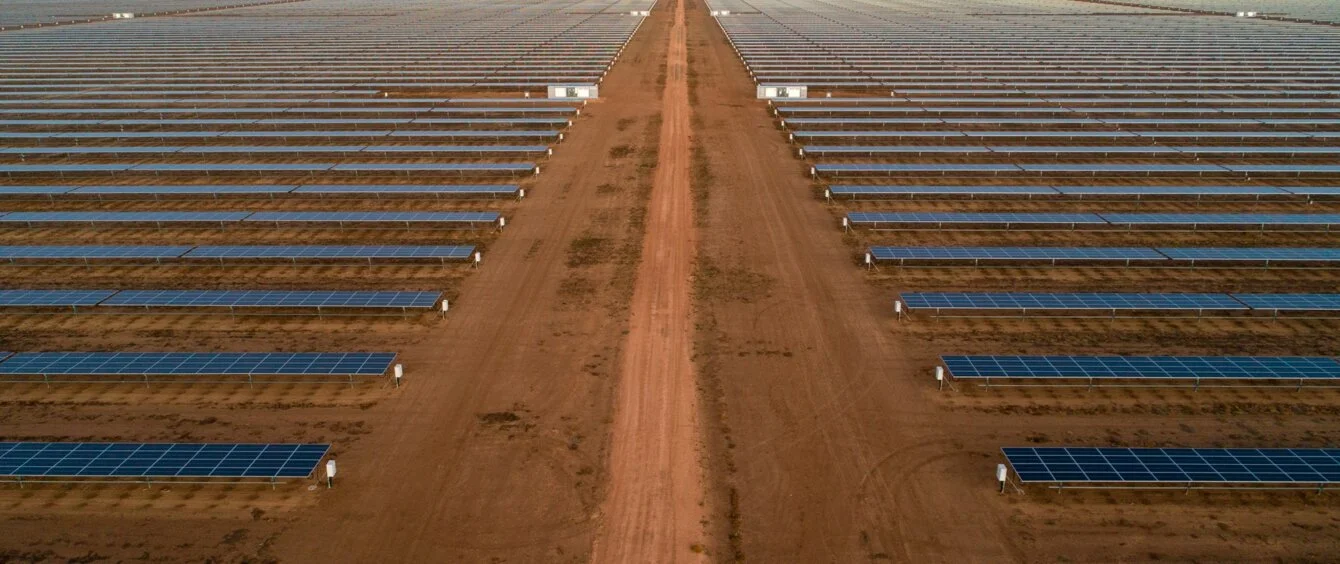South Australia, which encompasses an area the size of France and Germany combined, is on course to reach 100% net renewable electricity generation on an annual basis as early as 2026-27, according to regional transmission system operator Electranet. This would be three years ahead of the state government’s 2030 target.
It would be a remarkable achievement, particularly given that only in 2018, the generation split between fossil fuels and renewables in South Australia was about 50/50.
Swift expansion of wind and solar energy
Records have been tumbling like dominoes. In October, the state met 86.9% of local electricity demand from wind and solar power. Over the 12-months to end-October, renewable energy accounted on average for 71.5% of the state’s power consumption. South Australia’s grid, since October 2021, has regularly experienced periods in which renewables met 100% of electricity demand.
Rapid construction of wind and solar power lies behind the green transformation. Over the last 17 years, the state’s renewable energy output has increased more than ten times, and, in the last seven years, it has jumped 84%, according to Electranet’s 2023 Transmission Annual Planning Report Update.
Rooftop solar deployment at world leading levels
A key element has been the rise of rooftop solar power, which rose from 764 MW in 2017 to almost 2 GW in 2022. As a result, minimum grid demand has fallen by over 100% in the last six years. An extraordinary 85% of transmission connection points in the South Australian electricity distribution network have experienced times when solar PV output is higher than local demand, according to Electranet.
The state’s high renewables penetration – with correlated generation patterns – has led to increased grid congestion and low capture prices for utility-scale solar and wind projects, discouraging further generation investments in the State, at least in the short-term.
It has also made the provision of storage ever more essential, and it will become more so, particularly if the state’s higher-growth scenarios are realised. South Australia has 455 MW of storage capacity installed, a level expected to rise to above 1 GW in the next three years.
Companies like RWE are looking at the opportunities to provide services that increase grid stability in South Australia and enable further renewable energy capacity to be built. In May, the company won a competitive tender in neighbouring New South Wales for construction of a large-scale 50MW/400MWh battery storage system for long duration storage.
Reliability and resilience
Given the growth of variable generation, Electranet is heavily focused on the reliability of its growing green electricity network. The installation of four synchronous converters in 2021, for example, to provide inertial power, has increased reliability and the ability to deal with changing patterns of congestion.
In addition, expanding connections with other Australian states allows the export of excess renewable power. Electranet started construction on the Project EnergyConnect interconnector in May, which will, in two phases, increase transmission capacity between South Australia and New South Wales.
Measures to increase the resilience of the South Australian electricity network reflect not just the changes in power flows as a result of more green energy, but the threat of the state being ‘islanded’, i.e. becoming operationally separated from the rest of the country’s transmission network. This occurred on January 31, 2020, when extreme weather knocked out both the Moorabool-Mortlake and Moorabool-Haunted Gully transmission lines. South Australia and a small part of Victoria operated as an energy island until February 17, 2020.
Demand trajectory on strong upward curve
The state’s success in providing a robust, low carbon power system is attracting industry and clean tech development. From would-be hydrogen exporters to green steel producers and sustainable mining, interest is rising in the state’s low carbon transformation.
Electranet says there is more than 2 GW of new demand currently seeking connection to the network, which will require some 6 GW of new renewable generation capacity. In addition, it has received enquiries for eight proposed large-scale generation projects each of more than 1 GW in size.
Under different scenarios the rate of power demand growth could be even higher than at present. The Australian Energy Market Operator’s (AEMO) ‘Step Change’ scenario, shows demand for green power in South Australia exhibiting a strong upward trajectory, rising from just under 10,000 GWh in 2021-22 to 20,000 GWh by 2028-29.
However, under the ‘Green Energy Exports’ scenario, in which the state’s abundant wind and solar resources become the basis for major green hydrogen production – both for domestic use and export — electricity supply and demand could rise to over 50,000 GWh by the early 2030s.
Both the Step Change and Green Energy Exports scenarios are part of AEMO’s Integrated System Plan published in 2022.
Photo credit: © RWE AG
